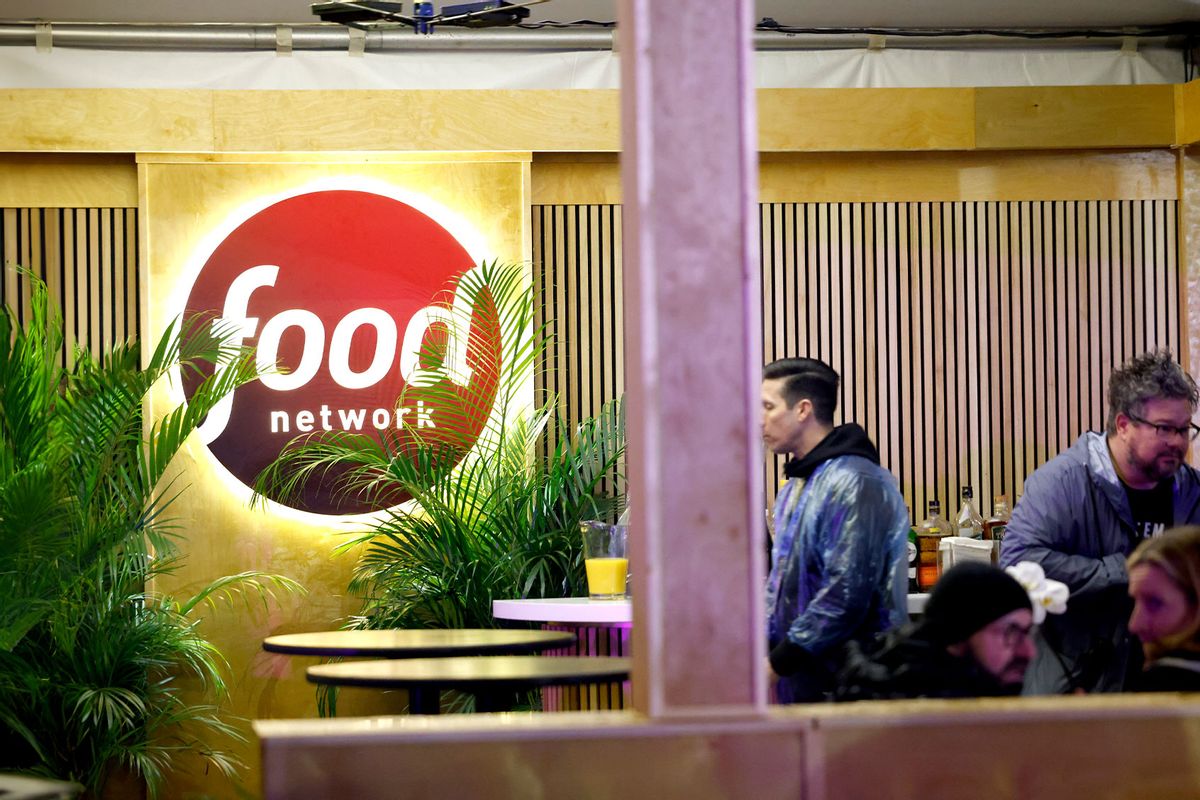Food Network has entered a new era of programming, much to the dismay of many longtime fans and longtime hosts. The cable network — which garnered acclaim with shows like Giada De Laurentiis’ "Everyday Italian" and Ina Garten’s "Barefoot Contessa" — is straying away from stand-and-stir television and instead, revamping its lineup with a slew of reality competition shows.
In recent months, many household Food Network personalities have shared their thoughts on the network’s perceived transformation. Some even left the network for good. Last February, De Laurentiis cut ties with the network after serving 21 years as a host and chef personality. She revealed in an Instagram post that she had signed a multi-year deal for an unscripted series production with Amazon Studios, instead. Then in May, Rachael Ray announced that she was moving on from “Rachael Ray” after 17 seasons to produce new stand-and-stir cooking shows in partnership with A+E Networks.
“Food Network has a terrific formula — but they have a formula,” Ray said. “They like games, competitions, stuff like that. That’s not the type of programming I want. I want a little more freedom to be in charge of the actual content, rather than just hosting something. I don’t want to host anything. I just want to make shows.”
Chef Robert Irvine also criticized Food Network after it canceled his hit show “Restaurant: Impossible" for no longer fitting the network's idea of what its viewers want to watch. “I don't think any amount of fans telling Food Network to bring it back will do anything.. to change their mind,” Irvine said in response to a fan. “They have a different idea of what the viewers want and @Rest_Imposs isn't in that…so we will move on and see what happens next…when i know i will let you know lol.”
Food Network’s latest critic is Valerie Bertinelli, who confirmed earlier this year that she had been cut from “Kids Baking Championship” by the network. Bertinelli took to Threads to express her disappointment with Food Network’s new content, saying, “I fell in love with Food Network two decades ago because of all the amazing ITK (in the kitchen) shows.” In addition to praising Ray's “30 Minute Meals” and programs hosted by De Laurentiis and Garten, Bertinelli said, “I learned so much. It's sad it's not about cooking and learning any longer. Oh well, that's just business, folks.”
Bertinelli’s post was in response to a viral thread from cookbook author Marlynn Schotland, who said, “I miss actual cooking shows on @foodnetwork. Remember those? Do you know what this world does NOT need? Yet another cooking competition show.”
Despite the mounting criticism, Food Network’s strategy is actually proving to be beneficial, hence why network executives haven’t made any initiative to return to prior programming. Food Network, which usually sees hikes in viewership amid the fall and holiday seasons, garnered more viewers last summer, per Variety. Food Network is among the Top 5 non-news/sports cable networks across total day ratings for adults aged 25-54, behind Nick at Nite, TNT, USA Network and TBS. At the time, Food Network was averaging 113,000 viewers in the 25-54 group, according to Nielsen’s Live + 3 Day data. The network’s average weekly primetime viewing rate has risen 4% year-over-year among the 25-54 group and 6% among all viewers.
As for specific shows, Food Network’s Sunday primetime competition “The Great Food Truck Race” was at the top of the leaderboard with more than 8.9 million total viewers across Food Network, Max and Discovery+. The Monday night show “BBQ Brawl” was watched by more than 8 million viewers across the linear TV channel and streaming services through the first two weeks of its new season. Tuesday’s “Supermarket Stakeout” reached more than 11.4 million viewers, which is an 11% hike from its previous season.
Other shows that have helped heighten network viewership included “Guy’s Grocery Games,” “Beat Bobby Flay,” “Outchef’d,” “Diners, Drive-Ins and Dives,” “The Kitchen” and “Girl Meets Farm.” Only one of those shows is a stand-and-stir food program.
Today, stand-and-stir television may be sparse, but it’s also evolving thanks to social media. Stand-and-stir content is quite popular on YouTube (think Joshua Weissman or Andrew Rea, a.k.a ‘Binging With Babish’), often being more intimate yet also unfiltered. Similar to stand-and-stir television, stand-and-stir YouTube offers viewers a sense of escape and ultimately encourages them to be adventurous by trying their hand at making something new.
Want more great food writing and recipes? Subscribe to Salon Food's newsletter, The Bite.
There’s also TikTok where stand-and-stir content tends to be more fast-paced. Tiffani Thiessen — the actor-turned-kitchen-star who hosts “Dinner at Tiffani's" on the Cooking Channel and “Deliciousness" on MTV — explained the distinction between Food Network shows and TikTok cooking while speaking with celebrity chef Nick DiGiovanni. Thiessen said that when she first started cooking on TV, “the stand and stir was slow. It was very conversational,” but as social media rose to popularity, “the cuts are fast; the recipes are fast.” The speed of TikTok has made cooking content “a whole different ball game than what I was doing,” Thiessen said.
Food Network’s strategy may not be appealing to those who adored the network’s educational programming, but it’s certainly smart. The network's new lineup is catering to people’s growing “hunger” for reality television, a ubiquitous multibillion-dollar entertainment industry. Approximately 79% of adults who watch television in the United States watch reality shows, per a report from the independent market research platform Gitnux. Additionally, approximately 60% of prime-time television in the United States is reality programming. Reality TV shows have also contributed to 21% growth in unscripted programming on TV.
Food Network may no longer be stand-and-stir television central, but other cooking channels like Magnolia Network and Cooking Channel are still serving viewers a platter of in the kitchen programs to enjoy. Only time will tell if those networks will follow in the footsteps of Food Network and add reality television to their own lineup.



Shares